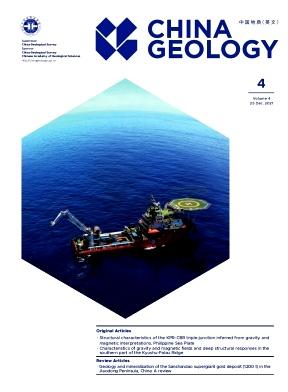Groundwater metal pollution and health risk assessment in river valley heavy industrial cities of arid regions in China
IF 4.7
3区 地球科学
Q1 GEOSCIENCES, MULTIDISCIPLINARY
引用次数: 0
Abstract
Xining, a river valley city in China’s arid region, serves as an important industrial hub with a fragile ecological environment. While groundwater heavy metal pollution in this area has drawn increasing concern, the sources and associated human health risks remain inadequately understood. This study analyzed 144 shallow groundwater samples from urban Xining for 14 heavy metals (Fe, Al, B, Mn, Ba, Zn, Pb, Cr6+, Ni, Cu, Co, Sb, Cd, and As) using the Nemerow comprehensive pollution index, correlation analysis, and the USEPA health risk assessment model. Results identified Fe, Al, B, Mn, Ba, Pb, Cd, and As as the primary pollutants, especially concentrated in river valley plains. These contaminants primarily originate from natural sedimentary conditions and human activities such as industrial and agricultural development. The pollution indices for Al, Pb, Mn, and Fe exceeded clean water thresholds, indicating serious contamination and the need for enhanced regulation. Health risk assessments revealed that children face greater exposure risks than adults, with arsenic and nickel being the main contributors to carcinogenic risk. Sensitivity analysis further showed that As, Fe, and Cd posed the greatest non-carcinogenic and carcinogenic risks, particularly in human-impacted areas such as the Nanchuan and Beichuan valleys and Ganhegou. These findings provide essential insights for groundwater safety management in plateau river valley cities and similar vulnerable regions.
干旱区河谷重工业城市地下水金属污染与健康风险评价
西宁是中国干旱地区的一个河谷城市,是一个重要的工业中心,生态环境脆弱。虽然这一地区的地下水重金属污染日益引起关注,但其来源和相关的人类健康风险仍未得到充分了解。采用Nemerow综合污染指数、相关性分析和USEPA健康风险评价模型,对西宁市144份浅层地下水样品中的14种重金属(Fe、Al、B、Mn、Ba、Zn、Pb、Cr6+、Ni、Cu、Co、Sb、Cd和As)进行了分析。结果表明,主要污染物为Fe、Al、B、Mn、Ba、Pb、Cd和As,主要集中在河谷平原地区。这些污染物主要来自自然沉积条件和工业和农业发展等人类活动。Al、Pb、Mn、Fe污染指标均超过净水阈值,污染严重,需要加强监管。健康风险评估显示,儿童比成人面临更大的接触风险,砷和镍是致癌风险的主要因素。敏感性分析进一步表明,As、Fe和Cd具有最大的非致癌性和致癌性风险,特别是在南川、北川河谷和赣河沟等受人类影响的地区。这些发现为高原河谷城市和类似脆弱地区的地下水安全管理提供了重要见解。
本文章由计算机程序翻译,如有差异,请以英文原文为准。
求助全文
约1分钟内获得全文
求助全文

 求助内容:
求助内容: 应助结果提醒方式:
应助结果提醒方式:


